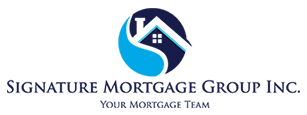The Bank of Canada reduced its target for the overnight rate to 3¾%, with the Bank Rate at 4% and the deposit rate at 3¾%. CPI inflation has declined significantly from 2.7% in June to 1.6% in September. The Bank’s preferred measures of core inflation are now below 2½%. With inflationary pressures no longer broad-based, business and consumer inflation expectations have largely normalized.
The Bank expects inflation to remain close to the target over the projection horizon, with the upward and downward pressures on inflation roughly balancing out. The upward pressure from shelter and other services gradually diminishes, and the downward pressure on inflation recedes as excess supply in the economy is absorbed.
With inflation now back around the 2% target, Governing Council decided to reduce the policy rate by 50 basis points to support economic growth and keep inflation close to the middle of the 1% to 3% range. If the economy evolves broadly in line with our latest forecast, we expect to reduce the policy rate further. However, the timing and pace of further reductions in the policy rate will be guided by incoming information and our assessment of its implications for the inflation outlook. We will take decisions one meeting at a time. The Bank is committed to maintaining price stability for Canadians by keeping inflation close to the 2% target. The next scheduled date for announcing the overnight rate target is December 11, 2024.
How does this rate cut affect you? This directly affects adjustable rate mortgages as the bank’s prime lending rate is immediately lowered which affects the interest rate pricing for these types of mortgages. It has been reduced by 0.50% so prime rate is now at 5.95%. This is great news as it helps adjustable rate mortgage holders experience a reduction in the their monthly payments. It works out to roughly $30 less in monthly payments per $100,000 of mortgage debt based on a 25 year amortization. For a typical $400,000 mortgage, that translates to savings of about $120 each month. If you add up the previous cuts this year, your monthly savings have likely grown to over $300 per month since the Bank of Canada started lowering its policy rate from its peak of 5%.
It’s important to note the difference between two types of variable rate mortgages: fixed payment variable rate and adjustable rate.
Adjustable rate mortgages: With an adjustable rate mortgage, both your interest rate and your monthly payment change with fluctuations in the prime rate. This means you’ll see an immediate reduction in your next mortgage payment following the recent rate cut. For a $500,000 mortgage, expect to save about $150 per month after the prime rate falls. Fixed variable rate mortgages: With this type of mortgage, your monthly payment stays the same even when interest rates fluctuate. However, the portion of your payment that goes towards interest versus principal will change. With the recent rate cut, more of your payment will go toward reducing your mortgage principal, meaning you’ll pay off your mortgage slightly faster.
What about fixed rate mortgages? For those with fixed-rate mortgages, the recent cut won’t directly impact your current payments, since your rate is locked in for the term. These are priced off of Government of Canada 5 year bond yields, that are in turn influenced by the U.S. Treasuries. Indicators of where fixed rates go, watch the U.S. 10 year because that’s where the Canada 5 year will go.
Fixed rates have already seen their own reductions in the past few months. While the trajectory hasn’t been a straight line, lenders have steadily been cutting fixed mortgage rates coinciding with the steady decline in Government of Canada bond yields, which lead fixed mortgage rate pricing.
While a rise in bond yields earlier this month caused some lenders to start raising fixed mortgage rates, experts think the downward trend will resume sometime soon.
Helocs and personal lines of credit: The recent rate cut isn’t just good news for mortgage holders. If you have a Home Equity Line of Credit (HELOC) or a personal line of credit, you’re in for some savings too.
These products are tied to the prime rate, which usually adjusts in line with the Bank of Canada’s rate changes. As prime rates drop, the interest costs on your line of credit will follow suit, putting more money back in your pocket each month.
Based on the average HELOC balance of $37,500, according to recent data, borrowers would see a reduction in interest costs of around $18 per month following the 50 bps rate cut. This is assuming the prime rate falls to around 5.95% at most major lenders.
What’s next? Most economists expect the Bank of Canada to keep cutting rates at its final policy meeting in December, and further into 2025.
Some big banks are adjusting their forecasts to reflect deeper rate cuts by the end of next year. The predictions are an additional 175 basis points (1.75 percentage points) of rate relief by the end of 2025, which would bring the Bank’s policy rate down to 2.00%. That could translate into a prime lending rate of around 4.20% at most major lenders.
Now’s a great time to review your mortgage strategy. If you’re thinking about whether to stick with variable or lock into a fixed rate, I can help you decide what’s best based on your unique situation.
Sources:Bank of Canada, CMP, CMT

